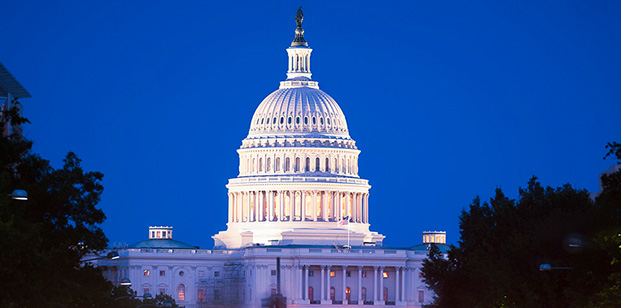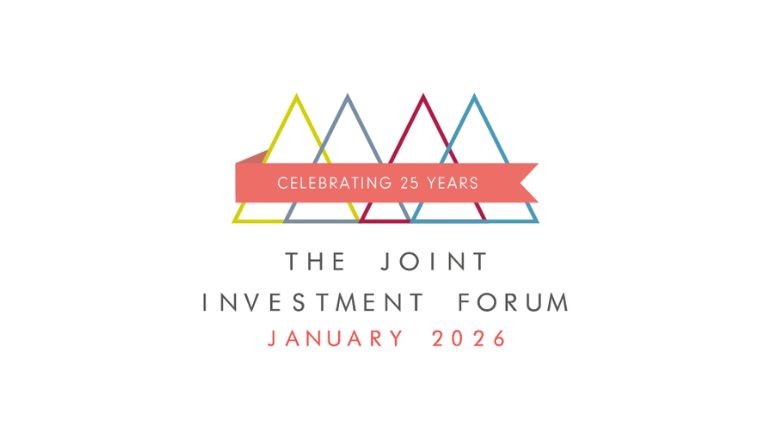HUB EXCLUSIVES PANEL DISCUSSION
Panel discussion, hosted by Cherry Reynard, with:
Jason Borbora-Sheen, Portfolio Manager, Diversified Income Fund, Ninety One
Luke Hickmore, Fund Manager, Strategic Bond Fund, Aberdeen Investments
The incoming US administration has correctly diagnosed that the US has a fiscal problem. It has built up vast trade deficits with the rest of the world, its currency makes its exports uncompetitive, and its debt burden is unsustainable. However, its approach to resolving these issues has been unorthodox to say the least.
The world’s largest economy lost its last AAA credit rating in May. Its debt levels are at war-time highs, and could get higher with the enactment of the ‘Big, Beautiful Bill’, which promises tax cuts. Attempts to balance these tax cuts with a reduction in spending have proved largely unsuccessful, with Elon Musk’s DOGE apparently ineffective.
While the precariousness of the US government finances does not appear to matter to stock markets very much, it has started to matter to bond and currency markets. Jason Borbora-Sheen, portfolio manager on the Ninety One Diversified Income fund says the question is broader than the quantum of debt: “The position of the US as the international reserve currency and a safe haven is starting to be questioned.
“Levels of debt that were slightly troubling beforehand are now starting to become much more at the centre of the market’s mind. The primary deficit is very high, unusually so. The debt to GDP levels are also approaching multi-decade levels. The investment position of the US situation is bad overall. It attracts a lot of foreign capital without recycling much back into the system.” He adds that this sits comfortably when you have an orthodox take on policymaking, but as that starts to shift, it becomes more of a problem.
No default
Luke Hickmore, fund manager on the Aberdeen Strategic Bond fund, says this is problematic – for context, Moody’s have had the US as an AAA since the 1940s. However, it is not default territory, whatever the talk of a secretive ‘Mar-a-Lago accord’ to create a defaqto default for US bonds.
He says: “The metrics aren’t great, but the US is nowhere near a default. We are talking about almost geological time scales for an economy the size of the US. We are in a 40-year trend that is only just now starting to change – post the fall of Berlin Wall, the opening up of the East and the peace dividend that brought. It could take another 40 years before there is sufficient deterioration for the US to come close to a default.”
Equally, he says, the US has generally had a good track record of paying down debt after difficult periods, such as after war. However, the orthodox approach to doing that – cutting costs and raising more money – is politically uncomfortable and not a choice anyone appears willing to grasp.
Hickmore adds: “The tariffs will raise more taxes and the Big, Beautiful Bill is going to raise spending. There needs to be a gap – an increase in cost cutting without the increase in spending. These things will take time. The US has been incredibly resilient through shock after shock. It could also achieve the same effect with growth. Right now, the economy is proving relatively resilient, but is there enough growth, with the Fed unable to lower interest rates? Probably not.
“Spending has not gone down since Covid and those were extraordinary times. There is room to cut budgets here, it’s just whether there is the political will.” In other words, the situation in the US is tough, but saveable. However, there isn’t the political bravery to deal with it.
This has implications for investors, says Borbora-Sheen. “It is starting to become apparent through these glacial shifts is that they send shockwaves through how asset markets behave. Over the last 40 years, the assumption has been that we were in a low volatility, low inflation world. Now we may face one where there is greater inflation volatility.
Volatile inflation
Part of that is the debt dynamic, but other factors are also playing a role: the decarbonisation agenda, demographics, technological advancements and politics. That creates a push and pull to inflation, which will be different to the last 30 years. The consequence is that bonds, and government debt in particular, behaves more like a risk asset.”
This, he says, is likely to be the biggest impact for investors. While they are unlikely to care about the level of debt to GDP, there could be a point when government bonds are being held for the same reason as equities. This will take some getting used to by investors.
US debt is unique in its scale, but a lot of developed markets are facing similar challenges, says Hickmore: “The UK has a 3.5% fiscal deficit; France’s is close to 6%. Right through core Europe are countries with these problems. Let alone Japan, where domestic investors in its government bond market are currently supporting a debt-to-GDP ratio of 200%. The US is not on its own. The cost of keeping an ageing population healthy is high and no-one has the political appetite to change it.”















